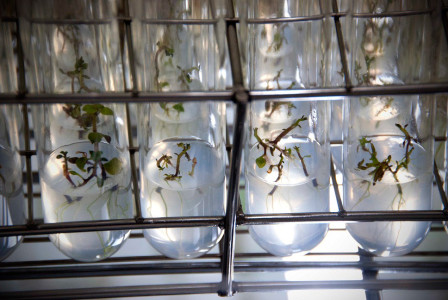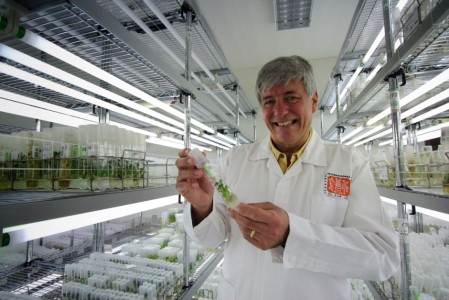There are about 1,750 genebanks around the world, containing over seven million samples (FAO). This number may seem huge but with only 25% of these accessions unique, the rest being duplicated in two of more genebanks, the numbers aren’t so large after all. The importance of these repositories lies in their role in keeping diversity alive around the world. Discovered recently, the global diet is homogenizing, making the need even more prevalent to conserve biodiversity. Biodiversity helps prevent catastrophic crop loss, as seen in 2009 with banana wilt, and over the years with many widely consumed crops threatened by major diseases (Wilt, Late Blight). Genebanks are the platforms that enable breeding success, by providing accessions containing desired traits such as disease or heat-resistance. Finding and breeding plants that are able to have higher yields, shorter cropping seasons, better nutritional value or that can withstand typhoons, such as sweetpotato, is essential for preparing for climate change.

David Ellis, head of the CIP’s genebank, has had his wheels in motion about what needs to be done to update genebanks and further their ability to help the world. Before we can see where genebanks need to go, we must understand where they are coming from. “To best understand the current workings of the genebank, each individual accession (unique plant collection) should be thought of as a book with a title, history and subject content”, says Ellis. “Think back to the days of card catalog library systems: these systems required a lengthy trial and error process to attain the desired information. The problem with this outdated cataloguing system is that the information and knowledge housed inside each book is not accessible, can’t be lent to a global scale, nor can it foster collaboration to save both time and money for researchers.”
In order to make the vast knowledge locked in genebanks accessible to people, Ellis believes that they need to be on a modernized communication tool, starting with putting all the information known about each accession into an online database. There, a breeder could simply search a key feature, name, trait, attribute or even a gene sequence and be given the results that pertain to their search. Also, an updated system would provide the ability to search across global barriers (if legal rights are adapted to the system) and be able to search all “nearby” genebanks, just like in modern libraries. By having each accession catalogued with name, growth rate, yield, and trait information, climate standards, or taste, farmers, scientists or breeders can easily make the most of the information. Likewise, genebanks around the world could compare their collections and see what is or isn’t lacking in the collections. Helping maintain the biodiversity found in genebanks or adding to it could hold the key to meeting tomorrow’s food challenges.

In this spirit, CIP’s Strategic Objective Six: Conserving Diversity for the Future, places emphasis on its genebank and its accessions. It is host to the largest in vitro collection, has more than 21,000 accessions of potato, sweetpotato, and Andean root and tuber crops (ARTCs) and was among the first to obtain certification from the International Organization for Standardization (ISO). Maintaining the biodiversity of these precious crops, that have been found to contain attributes such as some ARTCs which can survive extreme environments conditions, could help alleviate future food security problems.
